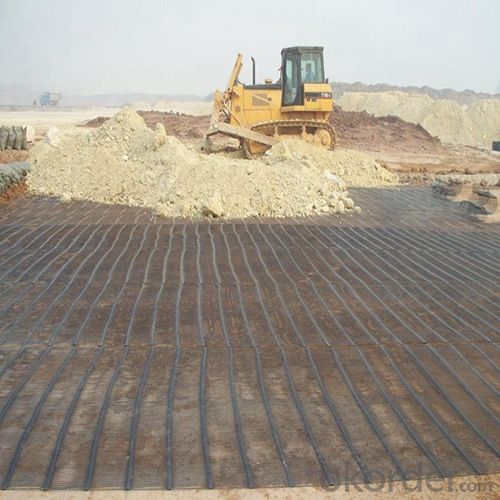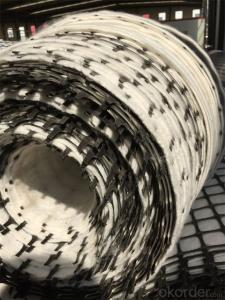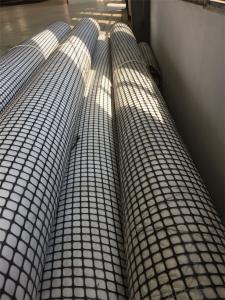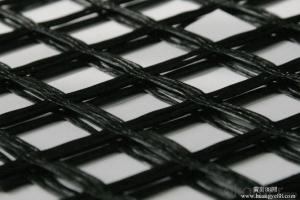Biaxial Polypropylene Geogrid with High Tensile Strength for Embedment Length of Geogrids MSE Walls in Civil Engineering Construction
- Loading Port:
- China main port
- Payment Terms:
- TT OR LC
- Min Order Qty:
- 1000 m²
- Supply Capability:
- 1000000 m²/month
OKorder Service Pledge
OKorder Financial Service
You Might Also Like
Introduction
Place of Origin:
China (Mainland)
Model Number:
Biaxial
Material:
Fiberglass
Tensile strength:
100kn
Roll Width:
3.95m
Roll length:
100 Meter
Geogrids are supplied in modules. it is possible to produce geogrid modules with area according to customer’s request.
Application Recommendations
Geogrids carry out the function of slopes protection, even of very steep ones, filling it with permeable materials, which increases slopes resistance to erosion. Specific moisture level inside the grid meshes provides vegetation (and esthetic view of earthworks).

Packaging & Shipping
Packing: PLASTIC FILM INSIDE, AND WOVEN BAG OUTSIDE
Shipping: About 15 days after receipt the deposit
Our Service
Quality assurance
1.On a regular basis or as per your request,we entrust national testing agencies to conduct quality inspections
2. Strictly in accordance with the ISO9001-2008 international quality system standard,we monitor and manage the whole process throughout production,quality testing,and measurement to ensure product quality
3. For quality-related construction delay or substandard construction(except for damage or losses due to customer’s responsibility or irresistible natural disasters),we have refunding,replacement,and repair services.We will respond to customers’ feedbacks on quality issues within 24 hours.
FAQ:
Q: What kind of payments does jenor support?
A: T/T, L/C, Cash are accepted.
Q: Do you charge for the samples?
A: Accordeing to our company policy, the samples are free, we only charge the freight fee. And we will return the freight fee during the next order.
Q: Can you produce according to customers' design?
A: Sure, we are professional manufacturer, OEM and ODM are both welcome.
Q: Do you have other products?
A: Yes, please check the pictures:
- Q: Can geogrids be used in soil stabilization for slopes?
- Yes, geogrids can be used in soil stabilization for slopes. Geogrids provide reinforcement to the soil, increasing its stability and preventing erosion. They are commonly used in civil engineering projects for slope stabilization to enhance the overall strength and integrity of the soil.
- Q: What are the procedures for using two-way geogrid
- 1 bidirectional geogrid is used to increase the bearing capacity of the road (ground) foundation, and the service life of the Yan Changlu (ground) foundation.2 bidirectional geogrid used to prevent road (ground) surface collapse or crack, keep the ground beautiful and tidy.3 bidirectional geogrid for the construction of convenient, time-saving, labor-saving, shorten the construction period, reduce maintenance costs.
- Q: How do geogrids help in reducing construction costs?
- Geogrids help in reducing construction costs by providing reinforcement and stabilization to soil, allowing for the use of less expensive and lower quality materials. They also minimize the need for excavation, backfill, and compaction, resulting in reduced labor and equipment costs. Moreover, geogrids enhance the lifespan of structures by preventing soil erosion and settlement issues, reducing the need for costly repairs in the long run.
- Q: Can geogrids be used in soil stabilization for agriculture?
- Yes, geogrids can be used in soil stabilization for agriculture. Geogrids are commonly used to reinforce soil and provide stability to various types of agricultural applications, such as retaining walls, embankments, and roads. They help to prevent soil erosion, improve load-bearing capacity, and enhance overall soil stability, making them an effective solution for soil stabilization in agricultural settings.
- Q: What are the benefits of using geogrids in roadways?
- The benefits of using geogrids in roadways are numerous. Firstly, geogrids provide reinforcement to the road surface, increasing its strength and stability. This helps in preventing the formation of cracks and potholes, leading to longer-lasting and more durable roads. Secondly, geogrids help in distributing the load from vehicular traffic more evenly, reducing the stress on the road and preventing premature deterioration. Additionally, geogrids improve the overall performance of the road by enhancing its resistance to rutting, erosion, and other forms of pavement distress. Moreover, geogrids can reduce construction costs by reducing the amount of aggregate required for road construction. Overall, the use of geogrids in roadways improves their longevity, reduces maintenance needs, and enhances the safety and comfort of road users.
- Q: Are geogrids suitable for use in mining applications?
- Yes, geogrids are suitable for use in mining applications. They are commonly used in mining to reinforce soil and stabilize slopes. Geogrids provide excellent tensile strength and can withstand heavy loads, making them ideal for reinforcing mining structures such as mine walls, tailings dams, and haul roads. Additionally, geogrids are resistant to chemical and environmental degradation, ensuring long-term stability and safety in mining operations.
- Q: What is the meaning of reinforced subgrade? Is there a geogrid type on the road?
- Some of them may be designed to be made of geocell and geotechnical net. Mainly depends on how you design.
- Q: Can geogrids be used in reinforcement of soft soils?
- Yes, geogrids can be used in the reinforcement of soft soils. Geogrids are commonly used in civil engineering applications to stabilize and reinforce weak soils. They provide tensile strength and distribute loads, improving the overall stability and load-bearing capacity of the soil.
- Q: How many square meters of steel plastic geogrid inspection
- It is about ten thousand square meters.
- Q: Can geogrids be used in reinforcement of mechanically stabilized earth bridge abutments?
- Yes, geogrids can be used in the reinforcement of mechanically stabilized earth bridge abutments. Geogrids are commonly used in geotechnical engineering to enhance the stability and strength of soil structures, such as bridge abutments. They provide tensile strength and distribute loads, improving the overall performance and longevity of the structure.
Send your message to us
Biaxial Polypropylene Geogrid with High Tensile Strength for Embedment Length of Geogrids MSE Walls in Civil Engineering Construction
- Loading Port:
- China main port
- Payment Terms:
- TT OR LC
- Min Order Qty:
- 1000 m²
- Supply Capability:
- 1000000 m²/month
OKorder Service Pledge
OKorder Financial Service
Similar products
Hot products
Hot Searches
Related keywords






























